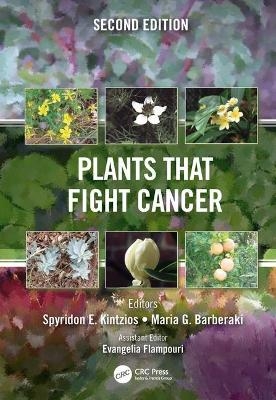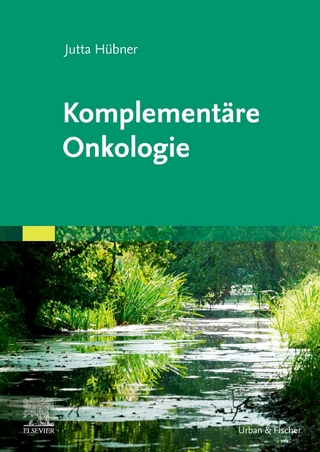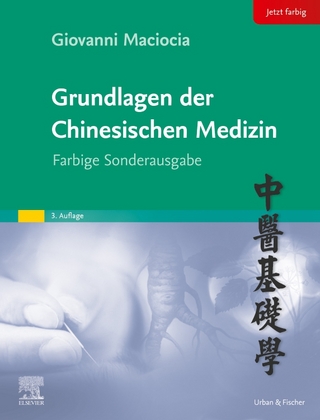
Plants that Fight Cancer, Second Edition
Crc Press Inc (Verlag)
978-1-4987-2640-5 (ISBN)
Plants that Fight Cancer, Second Edition, is a compilation that reviews cancer treatment and research-based information on the plant kingdom as the source of both known and novel chemical moieties and mixtures, many of them still under identification. This new edition follows the organization of the first book with a considerable expansion of content that more than doubles the volume of information.
Divided into four segments, the first part is dedicated to a review of our current knowledge of cancer, the different types and incidence, the molecular pathways of the disease, and the various treatment protocols, with an emphasis on chemotherapy. The second part is a brief journey in pharmacognosy, with detailed information about each of the fourteen different chemical groups of plant secondary metabolites, their use in cancer chemotherapy, and updated information on the biotechnological production of the most representative compounds in clinical practice. The third part of the book comprises six chapters dedicated to either plant chemotherapeutical approaches to specific cancer types (e.g. bladder, prostate) or specific groups of plant secondary metabolites with novel and promising properties for cancer treatment (e.g. naphthoquinones, lectins, phenanthridone alkaloids). The fourth part, containing investigative information on almost 300 individual plant species with established anticancer properties, either on a clinical or in vitro level, is with no doubt the most analytical.
This new edition contains chapters on cytotoxic phenanthridone alkaloid constituents of the Amaryllidaceae; naphthoquinone-contained anticancer terrestrial plants; polyphenols and cancer immunology; medicinal plant product-based fabrication nanoparticles (Au and Ag) and their anticancer effects; bladder and prostate cancer; and plant lectins in cancer treatment.
FEATURES
• Provides efficient information for all kinds of cancer and plant chemotherapeutical approaches to specific cancer types
• Discusses specific groups of plant secondary metabolites with novel and promising properties for cancer treatment
• Provides scientific information for medicinal uses of various plants
• Contains analytical information on almost 300 individual plant species with established anticancer properties, either on a clinical or in vitro level
• Focuses on plant genera and species that are either already used in cancer chemotherapy or have been identified with antitumor and antileukemic properties to a bigger or lesser extent
Professor Spyridon Kintzios is the Rector of the Agricultural University of Athens (AUA) and the founder and Director of the Laboratory of Cell Technology and the AUA Center for Applications of Cell Biological Technologies. He received his Ph.D. in Genetics and Plant Breeding from the Technical University of Munich. He has a working experience of over 30 years in Biotechnology. He is the author/co-author of 110 peer-reviewed articles in cited international scientific journals, as well as the author or co-author of more than 100 international book chapters and conference presentations. He is also the editor of five international books, a fellow of several Scientific Societies and a member of several public, academic and industry committees in Greece and abroad. Dr Maria Barberaki graduated from the Department of Agricultural Biotechnology, Agricultural University of Athens, Greece. Her PhD study was focused on the production of secondary products with medicinal use from Viscum album using biotechnological methods. Dr Barberaki has a several year-long working experience at international pharmaceutical companies. She was one of the Editors of the first Edition of Plants that Fight Cancer. She is currently working in Secondary and Vocational Education. Dr Evangelia Flampouri holds a PhD in Agricultural Sciences specializing in Mammalian Toxicology, a Master of. Arts degree in Bioactive products and Protein Technology and a Bachelor of Arts degree in Agricultural Biotechnology. She has over 10 years of experience in Academic and Industrial research projects. She has worked as a contracted Associate Professor at the Agricultural University of Athens, teaching Pharmacognosy and Bioactive Products. She is the author/co-author of various peer-reviewed articles in cited international scientific journals.
1. Cancer: A Brief Overview of the Disease and its Treatment
1.1. Incidence and causes: cancer in a nutshell
1.2. Classification of cancer types
1.2.1. Cancers with less than 20% five-year survival rate
1.2.2. Cancers with five-year survival rates (at all stages) between 20 and 50%
1.2.3. Cancers with five-year survival rates between 50 and 80%
1.2.4. Cancers with five-year survival rates higher than 80%
1.3. Therapy
1.3.1. Conventional cancer treatments
1.3.2. Advanced cancer treatments
1.3.2.1. Protein kinase inhibitors and other enzymes
1.3.2.2. Immunotherapy
1.3.2.3. Angiogenesis inhibitors
1.3.2.4. Hormones
1.3.3. Other advanced therapies
1.3.4. Alternative cancer treatments
1.4. From source to patient: testing the efficiency of a candidate anticancer drug
1.4.1. Preclinical tests
1.4.2. Phases of Clinical Trials
1.4.3. Clinical Trial Protocols
2. The Plant Kingdom: Nature’s Pharmacy for Cancer Treatment
2. 1. Brief overview of the general organization of the plant cell
2.2. The chemical constituents of the plant cell
2.2.1. Primary metabolites
2.2.2. Secondary metabolites
2.3. Why do plant compounds have an anticancer activity?
2.4. Chemical groups of natural products with anticancer
2.5. Biotechnology and the supply issue
3. Cytotoxic Phenanthridone Alkaloid Constituents of the Amaryllidaceae
3.1. Introduction
3.2. Isolation of phenanthridones
3.3. Structural features of phenanthridones
3.4. Synthesis of phenanthridone alkaloids
3.5. Cytotoxic effects of phenanthridone alkaloids in vitro
3.5.1. Narciclasine and its congeners
3.5.2. Pancratistatin and its congeners
3.5.3. Narciprimine and its congeners
3.6. Structure-activity relationship studies
3.6.1. Truncated analogs
3.6.2. Ring-A modifications
3.6.3. Ring-B modifications
3.6.4. Ring-C modifications
3.7. Cytotoxic effects of phenanthridone alkaloids in vivo
3.7.1. In vivo effects of narciclasine
3.7.2. In vivo effects of pancratistatin
3.8. Mechanism of action of phenanthridone alkaloids
3.8.1. Permeability and solubility
3.8.2. Efflux pump interactions
3.8.3. Mitotic effects
3.8.4. Effects on protein synthesis
3.8.5. Topoisomerase inhibition
3.8.6. Effects on calprotectin
3.8.7. Effects on nitric oxide
3.8.8. Effects on tumor necrosis factor (TNF)
3.8.9. Apoptosis inducing effects
3.8.9.1. Apoptosis inducing effects of narciclasine
3.8.9.2. Apoptosis inducing effects of pancratistatin
3.8.9.3. Apoptosis inducing effects of ring-C unsaturated analogs
3.8.10. Tumor invasion and metastasis
3.9. Conclusions
3.10. Acknowledgements
3.11. Conflict of interest
3.12. Abbreviations
4. Naphthoquinone-Contained Anticancer Terrestrial Plants
5. Polyphenols and cancer immunology
5.1. Introduction
5.1.1. Tumor microenvironment
5.2. Tumor-infiltrating cells
5.2.1. Macrophages
5.2.2. Dendritic cells (DCs)
5.2.3. NK cells
5.2.4. Myeloid Derived Suppressor Cells (MDSCs)
5.2.5. T and B lymphocytes
5.2.5.1. T lymphocytes
5.2.5.1.1. CD8+ Cytotoxic T-Lymphocytes (CTLs)
5.2.5.1.2. CD4+ helper T-lymphocytes
5.2.5.1.3. CD4+ CD25+ FoxP3+ T lymphocytes (Tregs)
5.2.5.1.4. T-lymphocytes
5.2.5.2. B-lymphocytes
5.2.6. Cancer Associated Fibroblasts (CAFs)
5.3. Natural compounds in cancer therapy
5.3.1. Polyphenols
5.3.1.1. Resveratrol
5.3.1.2. Curcumin
5.3.1.3. Quercetin
5.3.1.4. Green tea polyphenols (GTPs) – (-)-Epigallocatechin 3- gallate (EGCG)
5.3.1.5. Apigenin
5.3.1.6. Silibinin
5.3.1.7. Other polyphenols
5.4. Conclusions
6. Medicinal plant-product based fabrication nanoparticles (Au and Ag) and their anticancer effects
6.1. Introduction
6.2. Medicinal plants and Au/or Ag-NPs synthesis
6.3. Mechanisms of action
6.4. Conclusion
7. Bladder and Prostate Cancer
7.1. Introduction
7.2. Method
7.3. Results
7.3.1. Selenium and Vitamin E
7.3.2. Pomegranate
7.3.3. Green Tea
7.3.4. Curcumin
7.3.5. Resveratrol
7.3.6. Silibinin
7.3.7. Ginkgo Bilboa
7.3.8.Modified Citrus Pectin
7. 3.9. Phellodendron amurense
7.3.10. Red Clover
7.3.11. Salvia
7.3.12. Mistletoe
7.3.13. Combined Therapies
7.4. Conclusion
8. Plant Lectins in Cancer Τreatment, the case of Viscum album L.
8.1. Introduction to lectin research
8.2. Lectin abundance and classification
8.3. Plant Lectins in cancer diagnosis and treatment
8.3.1 Plant lectins in cancer diagnosis
8.3.2 Plant lectins in cancer treatment
8.4. Viscum album lectins in cancer treatment
8.5. Conclusion
9. Plants Species with Anticancer Activity
9.1. Introduction: General Botanical Issues
9.1.1. Life cycle
9.1.2. Plant anatomy
9.2. Species-specific information
9.2.1. Success Stories: Plant species used in contemporary clinical cancer treatment
9.2.2. Species with Anticancer Active Ingredients
Appendix: Chemical structures of selected compounds
| Erscheinungsdatum | 30.08.2018 |
|---|---|
| Zusatzinfo | 27 Tables, black and white; 32 Illustrations, color; 195 Illustrations, black and white |
| Verlagsort | Bosa Roca |
| Sprache | englisch |
| Maße | 178 x 254 mm |
| Gewicht | 1143 g |
| Themenwelt | Sachbuch/Ratgeber ► Gesundheit / Leben / Psychologie ► Alternative Heilverfahren |
| Medizin / Pharmazie ► Allgemeines / Lexika | |
| Medizin / Pharmazie ► Naturheilkunde | |
| Naturwissenschaften ► Biologie ► Botanik | |
| Naturwissenschaften ► Chemie | |
| Weitere Fachgebiete ► Land- / Forstwirtschaft / Fischerei | |
| ISBN-10 | 1-4987-2640-2 / 1498726402 |
| ISBN-13 | 978-1-4987-2640-5 / 9781498726405 |
| Zustand | Neuware |
| Haben Sie eine Frage zum Produkt? |
aus dem Bereich


